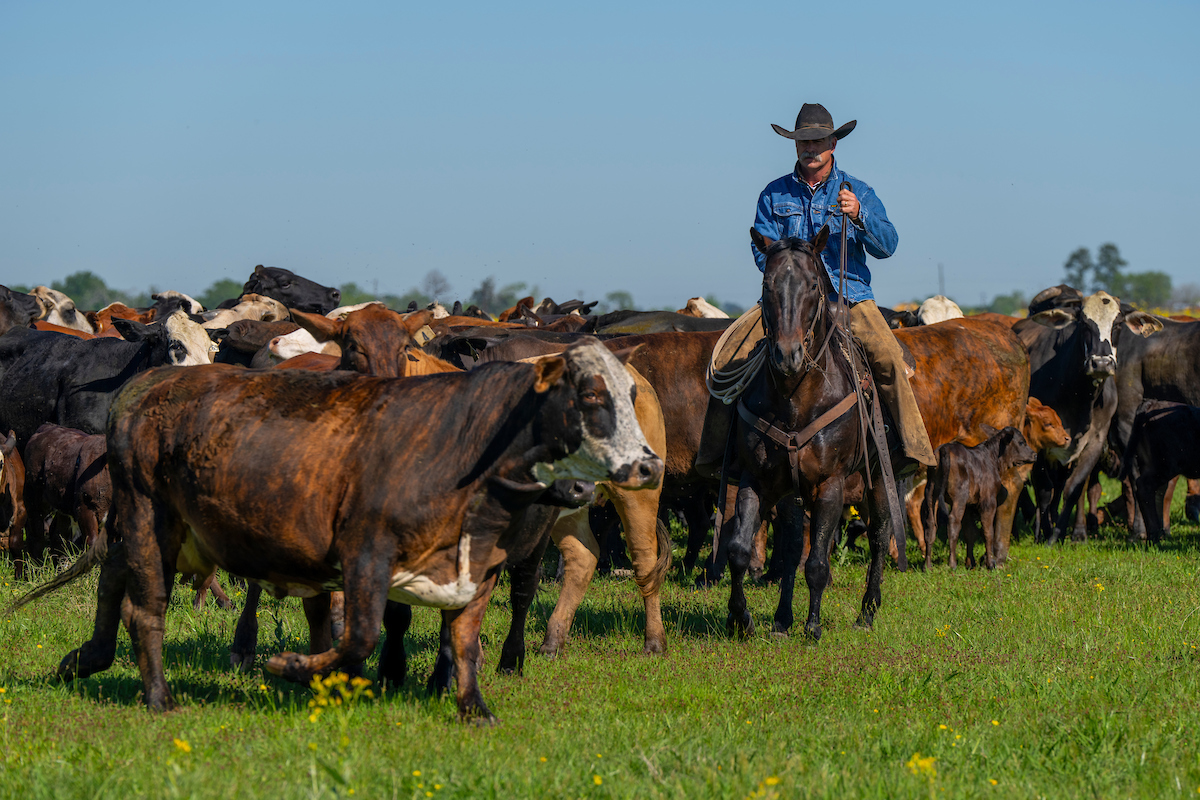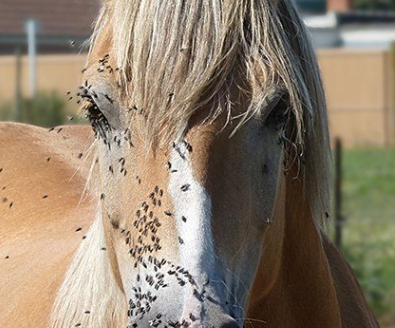Documentation a must in an emergency

Faced with an evacuation, veterinarian Elizabeth Gorrell said having an up-to-date collection of documents for each horse is critical.
Having a current Coggins [report] on each horse allows the horse to be housed on unfamiliar property or at public facilities without the fear of equine infectious anemia (EIA). Multiple copies of the Coggins through multiple platforms, i.e. hard copy, on a smartphone and online with log-in information are a good idea.
It’s also good to have at least a summary of the horse’s health records available that notes individual conditions. Those can include metabolic concerns, vaccinations and more specifically what’s in those vaccinations.
“You want to keep all of these records in either a digital or a waterproof way,” said Gorrell, a member of the American Association of Equine Practitioners’ Horse Owner Education Committee. “I have many clients who have a binder that has those little plastic paper protector things in it, and they just slide those in, and then they put that whole thing in a dry bag when the hurricane is coming.”
Having current photos of each horse is also important, with special emphasis on any identifying marks—brands, scars or other features. These too need to be in a waterproof or digital form. Any insurance information needs to be readily available if the horse is insured. Gorrell said it’s also valuable to know specifics about the facility where the horse is boarded or housed, especially if it is somewhere other than the owner’s farm or ranch.
“What kind of general information do you need to have about where your horses are? Who owns it? Who’s the emergency contact? Who’s the vet?” she said. “Are all the roads easily accessible to that facility? It can be helpful to know the number of stalls, what the barn is made out of, if there’s any sort of fire suppression system. It’s also very useful to know who the utility providers are and if is it on well water or city water.”
A similar mindset is needed for medical directives and an emergency contact list.
“This list can be long. It needs to have things like your local police department non-emergency line, fire department non-emergency line,” Gorrell said. “Most areas will have some sort of disaster preparedness website where they will list all kinds of the emergency numbers for your area, very generally easy to find, and if you can’t find it, just call your county or your local government.”
Owners should have a veterinarian and back-up contact information, and the same applies for farriers. Gorrell also suggested having someone on the emergency contact list who doesn’t live in the area. This is important when phone signals aren’t working, and having someone outside the area can help.
Medical directives aren’t something many horse owners want to think about, but making them when not emotional helps in time of an emergency. Online forms can be helpful and allow owners to have a plan when it’s a medical emergency facing their equine.
“It’s going to answer all those hard questions,” Gorrell said. “If they’re insured or not, if they’re a surgical candidate, and what type of surgery you would approve. Would you approve if they have a laceration to their joint? Would you approve if they have some sort of traumatic burn? These are all if you can’t be contacted.”
A medical plan can assign a specific person to make a decision if he or she can’t be reached, or the owner can include parameters on what they’re willing to spend on care and treatment.
“I know nobody wants to think about that, but please consider that beforehand,” she said. “You’ll want to do one for each of your horses, and it is OK if the answers to what you want to do with each of your horses is different.”
Keeping supplies at each farm or ranch can be tailored to fit needs.
Stay ahead of the game
When evacuating with horses, veterinarian Chelsea Folmar, also a member of the AAEP education committee, recommends leaving early and keeping in mind that if there’s a lot of traffic, those evacuating may have to wait on the roadways for long stretches. Those evacuating should make sure to have plenty of food and water along and try to unload horses every three or four hours.
“This allows them to put their head down to kind of cough out all that crud in there,” Folmar said. “It allows them to drink water, to urinate. This can be a stressful time for your horses and for the people involved.”
The person driving the truck and trailer must be prepared, too, she said. This person should be able to maneuver the rig safely, and having multiple travel routes is helpful if the driver isn’t as versed in driving a large rig.
“Trying to do that U turn when you’ve got a four-horse trailer on is not the easiest thing in the world,” she said.
Maps should be written out as GPS routes can be inaccessible at times. Folmar said to make sure to have a full tank of fuel before evacuation starts. When evacuating multiple horses, sometimes horse owners have to make the hard decision of which animals get to go first and which might have to be left behind.
“Sometimes this can be prioritized, whether it’s the most valuable, the easiest to load, personal preference or which horses can go in the trailer together,” she said.
If owners have to leave horses behind, they can set them up for success by leaving as many supplies behind as they can with a goal to cover three to four days. This supply should be wrapped in plastic or a waterproof tarp and stored in a secure area.
As a practical example, Folmar said owners can use clean plastic garbage containers and fill them with water. “That way you know you have clean water, and you don’t have to be waiting on pumps or electricity in order to make that happen.”
Leaving behind care instructions is also important, Folmar said, noting any special feeding instructions or medications. To increase the odds of being reunited with a lost or displaced horse, Gorrell and Folmar recommended using multiple types of identification on the horses.
“This can be things like livestock crayons,” Folmar said. “You can write on their hoof with a Sharpie. I’ve even seen some of the hoof paint that people have used before on there. You can also braid a cattle tag, or some other form of tag, in the mane.”
If leaving a halter on the horse, make sure it’s a breakaway halter or made of a material that easily breaks. Leather is a good choice if it has to be left on during a fire, she said.
One final consideration is how to secure the area where a horse is being left during an evacuation.
“I want you guys to visualize where your horse is kept right now,” she said, asking horse owners to picture any objects that could do damage in a hurricane, tornado or other major storm.
“When you’re preparing it, this means turning things off like a circuit breaker, checking the fence line to make sure everything’s in line, and then putting away those things you just visualized,” she said.
In the end, she said, preparing for an emergency involves giving careful attention to answering the question “How can we set up our horse for success as they weather the storm?”
Gorell and Folmar also suggested working closely with a veterinarian to ensure owners have all their bases covered for specific concerns in a certain geographical area.
Made it through
When owners can return home will be determined by a couple of factors, including if they evacuated with horses. If the horses came, Gorrell said to stay away from the affected area until emergency management allows people back in.
“I know that we are very frequently told that you don’t have a vested interest in coming back into the county, you may not come,” she said. “If you have evacuated with your animals, just sit tight.”
If you have to come back before the “all clear” is given, or you had to leave your animals in the affected area, make sure to get local emergency services’ approval first.
“You can call them and tell them exactly where you’re trying to go,” Gorrell said. “They may advise you that that is impossible at this time and to not come back. You can be a drain on the system and make the job of emergency personnel who are working10 times harder.”
Most evacuees want to get back home as soon as possible, but one of the best ways to help is by not coming back too soon. There are a lot of variables that make returning unsafe, and repairs can wait until conditions improve. Additionally, it is important to consider whether power lines or down or whether water sources are available.
“If you are able, when you come back from a disaster, bring your own water supply,” Gorrell said. “Bring your own feed. Bring all your own supplies. If you’re coming back, be prepared to be self-sufficient until the local economy can get back up to normal.”
Kylene Scott can be reached at 620-227-1804 or [email protected].



